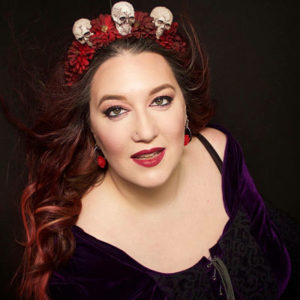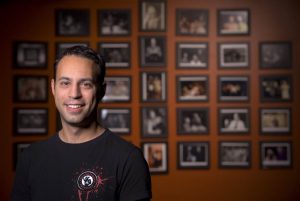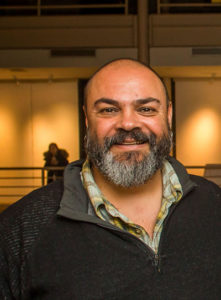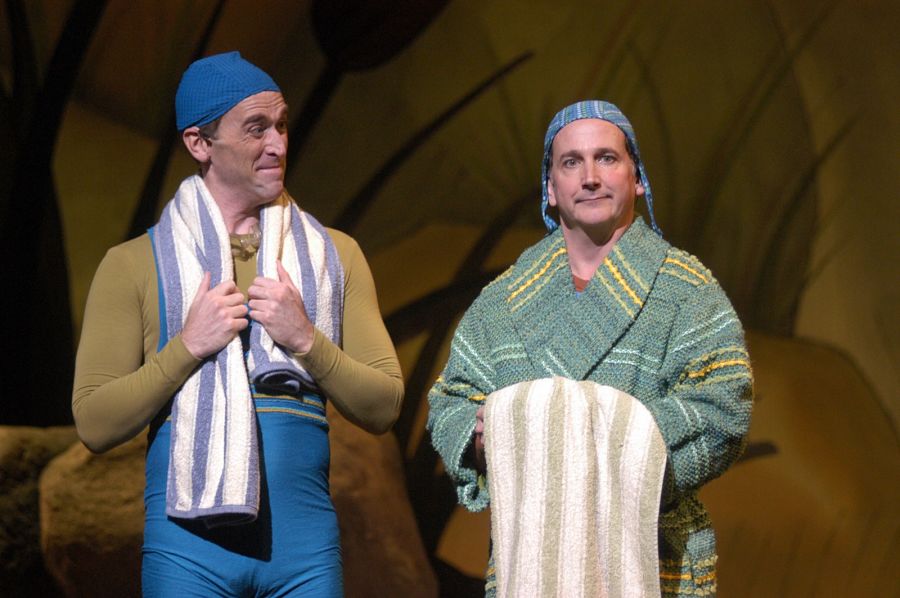When writing about theatre for young audiences (TYA), the subject of the TYA field’s place within the larger American theatre landscape is often a hot-button issue. What are the real differences between TYA and “grown-up” theatre? Is it the non-TYA world that draws these distinctions, or the TYA community itself? How useful are these distinctions in the first place?
These questions—as well as more practical ones, about TYA not getting the same share of resources and recognition that “grown-up” theatres do—tend to find their way into conversations about TYA that might otherwise just focus on the work.
I interviewed four very different theatre professionals about real and perceived stigmas that TYA faces, as well as what the TYA field can do and has already done to help create new narratives about TYA’s place in the world.
EMMA HALPERN: How does the larger theatre world treat TYA artists and companies, compared to artists and companies that make work for grown-up audiences? Can you cite any concrete examples of this sort of treatment? And why do you think the treatment is different?

Raven Snook, editor of TDF Stages and contributing critic to Time Out New York: As someone who has been covering “grown-up” theatre as well as theatre for young audiences for decades, it’s clear to me that American editors and audiences don’t view them as equal. It’s challenging to convince theatre editors that TYA is worth covering, unless a known “grown-up” artist or company is behind a family-aimed show. Whether it’s called TYA, family theatre or children’s shows, there is a sense that these productions are meant only for a specific audience: kids and their families. No matter how inventive or groundbreaking the works are, until they lose that qualifying label, it’s hard to convince editors, audiences, and even other artists that they are of interest to theatre lovers of all ages.

Suzan Zeder, playwright and President of the Children’s Theatre Foundation of America: The whole issue of the disparity between TYA and Theatre for Adults is related to how we view and treat children in our society as a whole. I believe this careens between misguided attempts to “protect” innocent young minds from ideas and images too advanced for their tender psyches, and the exploitation of the “youth market” for commercial purposes. Many of our preconceptions about the kinds of material considered “appropriate” for young audiences are based on adult fears and phobias and a serious underestimation of the capacity of children to deal with complex issues, deep emotions, and a worldview that is far more sophisticated than many adult gatekeepers give them credit for. Both of these societal forces have had an impact on TYA in terms of form, content, how work is made, and how it is perceived.

Greg Reiner, director of theatre and musical theatre programs for the National Endowment for the Arts: There are two areas where we have to really figure out how to engage the larger field. One is with national foundations. How does TYA get on the radar of those foundations so that it’s included, so we get to a place where big foundations always have a children’s theatre in the mix? The other area is the media. There’s barely any arts coverage on paper at all anymore, but within that world, it’s my hope that we get to the point where reviewers always review the local children’s theatre. In D.C. that’s not the case right now. Adventure Theatre and Imagination Stage just cannot get reviewed by the mainstream press here. Part of the solution might be engaging journalists more one-on-one. How do we support them? Are we all subscribing to our local papers and supporting journalism in that way? And when we subscribe, are we writing a note to the editor saying, “Part of why I’m subscribing is I value your local arts coverage?”

Jeremy “Boomer” Stacey, executive director of International Performing Arts for Youth (IPAY): At the IPAY conference, people are often blown away when they see the work for the first time, when they see something that makes them rethink what theatre for young people could be. When you look at a lot of the major arts festivals, TYA work is put in a different category, if it’s even included at all. I think there are a number of artists that don’t really know what TYA is. We need to expose our work to a greater segment of the creative community.
In your own words, what are some of the well-known stereotypes about TYA? How do you think these stereotypes emerged, and why do you think they persist? Are there specific examples you can discuss that demonstrate the ways such stereotypes are misguided?
Snook: I think many adult theatre lovers, especially ones who don’t have kids, assume TYA is amateurish or “edutainment” or based on picture books or hit TV shows. There are so many innovative NYC-based TYA companies. I think many culture-savvy NYC families aren’t even aware of how many troupes like these are making high-quality theatre for kids and their parents. When you ask most families about whether they attend theatre with their kids, the New Victory Theater (which has done a great job positioning itself as NYC’s premier family theatre) and Swedish Cottage Marionette Theatre (or Puppetworks if they live in Brooklyn) are the only theatres they can name. There are so many others!
Zeder: On a practical economic level, there is the assumption that pay scales for artists in TYA are lower, commissioning fees for new plays are less, and production values are diminished…. But this is far from true in many cases. The production of plays for young and family audiences is at an all-time high in terms of artistic quality, production values, and technical sophistication. Ironically the content of TYA dramaturgy in many of these same theatres has not grown and deepened commensurately. This is partly because the stakes are so much higher. As companies have grown, so have their budgets and fiscal responsibilities. TYA companies cannot afford to take the risks they once could.
Reiner: I had one perception that turned out to be very wrong. Before working at the NEA, I thought children’s theatre probably had the easiest time raising money. I just assumed it was well funded, because the case for its value seemed so clear and easy to make. I was very surprised to find out that with a few exceptions that’s not the case, which provokes the questions of why is that, and what can we do to change that?
Stacey: There are two very strong perspectives that I hear perpetuated quite a bit. One is the perception that work for young people has to be filled with primary colors or jazz hands or something sugary and sweet. That it isn’t provocative or sophisticated or intelligent. The other is the idea that work for young audiences is work for future audiences, and therefore it’s important because we’re training young audiences to be future subscribers or ticket buyers. But I think for a lot of us, that implies kids are not important as an audience now, and they should be. Most of us working in the field think of young people as intelligent, creative beings who have the same rights and responsibilities as adults, and should have access to high-quality, innovative work.
From your perspective, how does the TYA field respond to these stigmas and stereotypes? What are the strengths and weaknesses of these responses? Are there any different ways of responding that you would suggest?
Snook: Over the past decade (perhaps a bit more), TYA companies have worked hard to lose the children’s or kids’ show label. TYA or, even better, “family” theatre are more inclusive terms that let the adults buying the tickets know they will get something out of the productions too. I’ve noticed a lot of TYA companies trying to target a specific demographic (i.e. Spellbound‘s toddler/preschool shows) or become known for a certain genre (Trusty Sidekick‘s immersive experiences). I realize many TYA troupes (especially the ones who play at the New Vic or Lincoln Center Kids) hope for a New York Times review. And while that’s a nice clip to have, I think a review on the top NYC kid activity sites (Mommy Poppins, Red Tricycle, Mommy Nearest, Time Out Kids) or some kind of special offer through those portals probably gets more butts in the seats. You need that kind of targeted marketing to parents, not just theatre lovers.

Zeder: I think it is a mistake to talk about “the TYA field” as if it were a single pasture growing a consistent crop. There is a tendency to define a field by its most visible products, plays and productions. In addition to the companies listed as TCG members, there are youth theatres, community-based ensembles, theatres for social change, companies addressing youth incarceration, groups dedicated to the artistry of activism. Some pieces are written, other devised, still others are created collaboratively by teams of professionals, teenagers, children, and social service experts. Here is where all of the stereotypes break down. It is the variety of TYA and its inability to be codified in a single aesthetic that is its true strength. We need the mainstream professional companies every bit as much as we need the renegades who are creating the future in their own image.
Reiner: A lot of TYA theatres are commissioning writers like Idris Goodwin to write high-quality new works for young audiences. This is really smart, especially if these artists are able to go around the country and say, “Look how important this work is, young people are the best audience my work has ever had.” At the NEA I’m trying to take time over the next year to determine the best way we can help theatre for young audiences. Some initiatives are to work on conducting some serious research and analysis into who’s going to children’s theatre and how TYA companies run, and to probably plan a convening for next summer to bring the field together.
Stacey: I’m starting to see a number of companies and presenting venues incorporate the voice of young people into the review process. They’re educating young people on critical language and looking at how they talk about a work, which I find really interesting and empowering. It gives agency back to young people, which we’re kind of all about anyway. It coincides with a shift we’ve seen in society, where young people trust each other more than they trust us.
How have these stigmas and stereotypes changed over time? Are there old misconceptions the larger field has gotten past?
Snook: Presenters like the New Victory and Lincoln Center Kids expose NYC families to TYA from around the world. And there’s more inclusion, with special performances for kids on the autism spectrum at many theatres. But TYA isn’t taken as seriously in this country as it is abroad. In England and Australia, many “adult” theatres program at least one family show per season. But here in NYC, Lincoln Center sections off TYA into its own program, LC Kids; it’s not part of the institution’s regular performing arts offerings. What would quality family shows look like at the Public or Playwrights Horizons? I know nonprofit theatres need to think of their subscribers, but how many more families might sign on if they included at least one TYA show per season?
Zeder: I am beginning to realize that every time we decry the “disparities” between TYA and adult theatre, we reinvent the mythology of difference. Every time we talk about a “stigma,” we create it. For far too long TYA artists, myself included, have seen ourselves as serious practitioners banished to the “kids” table at the Thanksgiving dinner. But that too is an unhelpful stereotype. In truth the “kids table” is where rules are broken, mischief is afoot, and things are a lot more interesting. At the end of the day, I believe that what needs to change is not the hierarchy of theatre but the hegemony of our society. We need to get past the mythologies that divide us, to abolish the stigmas and stereotypes of separation, and get on with the work of using theatre to change lives, whether those lives belong to children or adults.

Reiner: I think a really big sea change moment for children’s theatre on the national stage was when Children’s Theatre Company in Minnepolis transferred A Year With Frog and Toad to Broadway, which was nominated for Tony Awards, and got the regional Tony. It was similar to when Steppenwolf started transferring shows to Broadway, breaking through the national consciousness. At the time I was working at a company that was not producing children’s theatre, but I thought this was a trend to watch, and that we needed to be producing TYA ourselves in our community.
Stacey: What’s important for IPAY as a community is continuing to expand networks so that it’s not solely Euro-based work or work from Australia, responding to changes in our community and to the audiences that we’re seeing. We’re now seeing more work from Asia and South America, as well as companies blurring the lines between circus and dance and physical theatre. People are starting to experiment a lot more beyond traditional Western scripted work, exploring narratives in a non-Western framework or non-Western forms, and decolonizing what we’ve come to accept as work we want to put in front of young people. We get entrenched with traditional or colonial views of what theatre is. I think we need to be more inclusive or more open to exploring what a new definition for both TYA and theatre in general might be. I think it just helps our argument. The more diverse our work is, the more effective we are at breaking down that notion that all TYA work is primary colors and a well-known adaptations and all of those other things.
Emma Halpern is the co-artistic director of New York City Children’s Theater.


